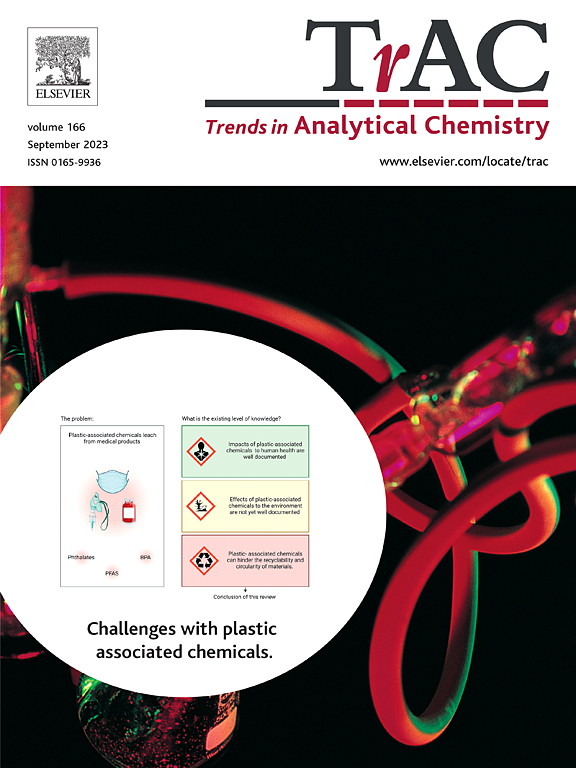Comprehensive approaches to expanding CRISPR biosensor applications beyond nucleic acid targets
IF 11.8
1区 化学
Q1 CHEMISTRY, ANALYTICAL
引用次数: 0
Abstract
The CRISPR/Cas system has transformed molecular diagnostics due to its exceptional specificity and programmability. Initially designed for detecting nucleic acids, recent progress has expanded its use to include non-nucleic acid targets. This review offers an in-depth examination of recent innovations in CRISPR-based biosensing, focusing on proteins, heavy metals, toxins, and other metabolites. It highlights novel methods that incorporate antibodies, aptamers, and DNAzymes for detection. Key CRISPR biosensing techniques, such as target recognition, signal conversion, and amplification, are discussed within the context of biosensor design principles. The review also addresses the future potential and challenges of CRISPR-powered biosensors, suggesting areas for further development and improvement in biosensing technologies.
将CRISPR生物传感器应用扩展到核酸靶标之外的综合方法
CRISPR/Cas系统由于其特殊的特异性和可编程性已经改变了分子诊断。最初设计用于检测核酸,最近的进展已将其用途扩大到包括非核酸目标。这篇综述深入研究了基于crispr的生物传感的最新创新,重点是蛋白质、重金属、毒素和其他代谢物。它强调了结合抗体、适体和DNAzymes进行检测的新方法。关键CRISPR生物传感技术,如目标识别,信号转换和放大,在生物传感器设计原则的背景下进行了讨论。本文还讨论了crispr驱动的生物传感器的未来潜力和挑战,提出了生物传感技术进一步发展和改进的领域。
本文章由计算机程序翻译,如有差异,请以英文原文为准。
求助全文
约1分钟内获得全文
求助全文
来源期刊

Trends in Analytical Chemistry
化学-分析化学
CiteScore
20.00
自引率
4.60%
发文量
257
审稿时长
3.4 months
期刊介绍:
TrAC publishes succinct and critical overviews of recent advancements in analytical chemistry, designed to assist analytical chemists and other users of analytical techniques. These reviews offer excellent, up-to-date, and timely coverage of various topics within analytical chemistry. Encompassing areas such as analytical instrumentation, biomedical analysis, biomolecular analysis, biosensors, chemical analysis, chemometrics, clinical chemistry, drug discovery, environmental analysis and monitoring, food analysis, forensic science, laboratory automation, materials science, metabolomics, pesticide-residue analysis, pharmaceutical analysis, proteomics, surface science, and water analysis and monitoring, these critical reviews provide comprehensive insights for practitioners in the field.
 求助内容:
求助内容: 应助结果提醒方式:
应助结果提醒方式:


